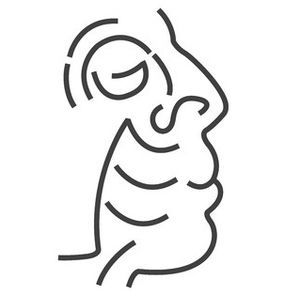What is a “Duchenne smile?” It is not a smile that just involves the corners of your mouth turning up. Instead, it is a smile that activates both the muscles around the mouth as well as the muscles around the eyes. In all persuasive situations, we are told that a sincere smile can often help. As I’ve shared previously, a smile makes a speaker more credible, and (for reasons that are probably unfair) is especially important for female communicators. Smiling also makes the smiler feel more positive and improves mental outlook. No, that doesn’t mean that you should grin your way through trial, but it does mean that at appropriate moments, a sincere smile can help to convey your warmth and your humanity. The courtroom, of course, is a setting where sincerity matters a lot, and the perceived sincerity of the smile is mostly determined by whether that smile is a Duchenne smile or not.
The alternative, of course, is the non-Duchenne or mouth-only smile. This is also called the “Pan Am smile” (after the defunct airlines who started the practice of having flight attendants give the perfunctory “Thanks for flying…” smile as you exit the plane, and more recently the “Botox smile” in honor of those whose paralyzed muscles around the eyes and forehead cannot participate in the smile. Research in a variety of settings shows the advantage of a full-face smile involving your mouth as well as the crinkles around your eyes. When advertisements use Duchenne smiles as opposed to neutral faces or non-Duchenne smiles, for example, viewers have a significantly better perception of both the ads as well as the product being advertised (Scanlon & Polange, 2011). When tested, only a minority of us can deliberately imitate a Duchenne smile. The rest, when asked to imitate a smile will give a fake smile (Gunnery, Hall & Ruben, 2013). However, with a little bit of attention, we can also learn to give a Duchenne smile whenever we want to (Thibault, Levesque, Gosselin, & Hess, 2012), and those with the ability to produce that Duchenne smile on command end up being more persuasive in interpersonal interactions (Gunnery & Hall, 2014). All of this adds to a body of research showing that Duchenne smiles are more likely to evoke a positive mood from viewer, triggering positive emotional response.
So let’s look at some examples:
The Duchenne Smile
The Non-Duchenne Smile
Note that if you cover the mouth on the photos above, you still see the expression around the eyes in the Duchenne example, while the eyes are just neutral on the non-Duchenne example. Because the muscles around the eyes are not in on the game, the viewer could more easily attribute other moods (coldness, sarcasm, contempt) to the smile in the non-Duchenne example.
Try It Now
You don’t need a mirror. Just try smiling as you read this. Think of something that makes you happy and give it a full smile until you can feel not just the muscles pulling up the corners of your mouth (those are the “zygomaticus major”) but also the muscles around your eyes (the “orbicularis oculi”). Now, try it with and without that eye involvement. The non-Duchenne version not only looks less sincere, it feels “fake” as well.
So, next time in court, before you plaster on a partial smile before greeting the jury, remember, it’s not a movement of just your lips, it’s a party involving the whole face.
______
Other Posts on Smiles and Facial Expression:
- Smile (For Credibility and Affect)
- Wipe That Smirk Off Your Face
- Don’t Wear Your Tension on Your Face
______
Gunnery, S. D., Hall, J. A., & Ruben, M. A. (2013). The deliberate Duchenne smile: Individual differences in expressive control. Journal of Nonverbal Behavior, 37(1), 29-41.]
Gunnery, S. D., & Hall, J. A. (2014). The Duchenne smile and persuasion. Journal of Nonverbal Behavior, 38(2), 181-194.
Scanlon, A. E., & Polage, D. C. (2011). The Strength of a Smile: Duchenne Smiles Improve Advertisement and Product Evaluations. Pacific Northwest Journal of Undergraduate Research and Creative Activities, 2(1), 3.
Thibault, P., Levesque, M., Gosselin, P., & Hess, U. (2012). The Duchenne marker is not a universal signal of smile authenticity–but it can be learned!. Social Psychology.
Image credit: All images from 123rf.com, used under license


